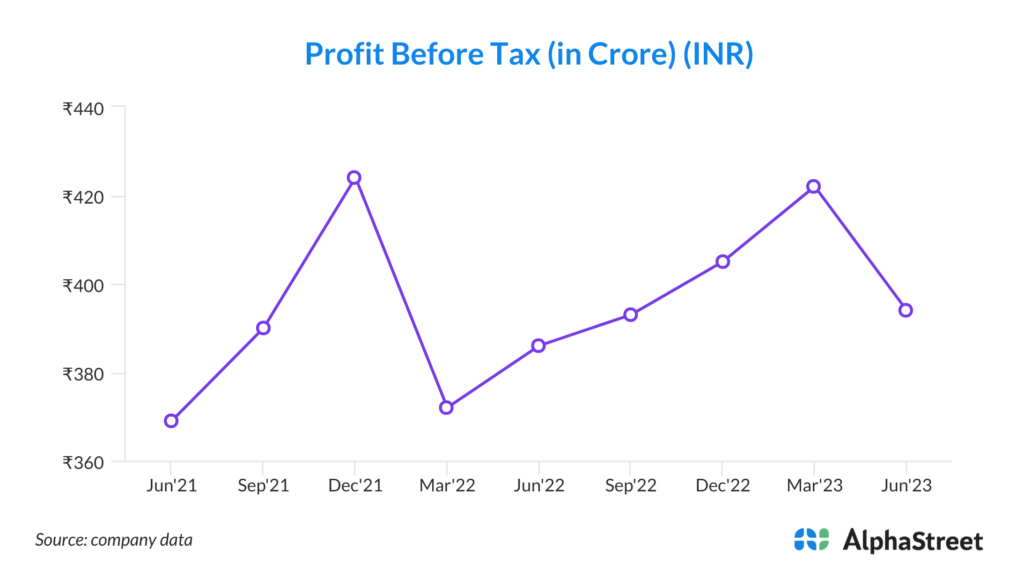Stock Data:
| Ticker | NSE: IBULHSGFIN |
| Exchange | NSE |
| Industry | NBFC |
Price Performance:
| Last 5 Days | +1.87 % |
| YTD | +26.75 % |
| Last 12 Months | +56.86% |
Company Description:
Indiabulls Housing Finance Limited is a prominent financial institution in India, specializing in housing finance and mortgage solutions. With a steadfast commitment to providing accessible and affordable housing finance to individuals and businesses, the company has earned a solid reputation in the financial sector. Leveraging its extensive experience and strategic partnerships with eight leading banks, the company offers a range of retail lending products, including home loans and loans against properties, while maintaining a prudent asset-light model.

Critical Success Factors:
1. Effective ALM Management: Indiabulls Housing Finance has demonstrated a keen understanding of Asset and Liability Management (ALM) principles. It recognizes that liquidity challenges can pose significant risks to financial institutions. The company has addressed this risk by actively managing its assets and liabilities to ensure it has the necessary liquidity to meet its obligations.
2. De-risked Balance Sheet: The company’s strategic move to reduce its exposure to wholesale loans to builders reflects its proactive risk management approach. This reduction minimizes its vulnerability to the weak housing market and the disruption of credit flow from non-banks. By diversifying its loan portfolio and focusing on retail lending, the company has made its balance sheet more resilient.
3. Diversified Funding Sources: Indiabulls has not relied solely on a single source of funding, especially not wholesale borrowing. Instead, it has implemented a multi-pronged approach to secure funds. This includes monetizing assets, refinancing existing liabilities, and mobilizing liquidity in a timely and proactive manner. This diversification of funding sources enhances the company’s financial stability and reduces dependency on specific markets or instruments.
4. Strong Liquidity Position: The company’s success in repaying approximately ₹4,800 Crores in the current quarter, along with the planned reduction of foreign currency borrowings, has significantly improved its liquidity position. This bodes well for its ability to meet debt obligations promptly and provides a cushion against unforeseen liquidity crises.
5. Buoyant Housing Market: Indiabulls operates in an environment with a strong and growing housing market. This market strength can be attributed to factors such as increasing urbanization, changing family structures, a robust economy, and rising incomes. These trends are favorable for the demand for housing loans and are expected to contribute positively to the company’s loan portfolio quality.
6. Asset-Light Model: The company’s adoption of an asset-light model is a strategic advantage. This approach allows it to scale its lending operations without relying on significant borrowings that might result in ALM mismatches. By collaborating with partner banks and maintaining an asset-light profile, the company can grow its assets while minimizing associated risks.
7. Co-Lending Relationships: Indiabulls has established co-lending relationships with eight partner banks. These strategic partnerships contribute substantially to the overall disbursal capacity of the company. Importantly, the asset-light co-lending structure means the company doesn’t need to build large borrowings to support its lending growth, reducing financial risk.
8. Sound Asset Quality: The company’s commitment to sound asset quality is evident in its low gross and net non-performing assets (NPAs). With gross NPAs at 2.87% and net NPAs at 1.69%, the company’s loan portfolio remains healthy. Furthermore, its imputed provisions of ₹6,385 Crores, covering its gross NPAs 3.4 times, provide a robust buffer against potential credit losses.

Key Challenges:
1. Continued ALM Risk: While the company has made efforts to address Asset and Liability Management (ALM) concerns, there may still be inherent risks associated with ALM mismatches. The maturity profile of its borrowings and loan portfolio could pose ongoing challenges, especially if interest rate movements are adverse.
2. Market Volatility: The housing market’s strong growth is an opportunity, but it also brings potential risks, such as increased market volatility. Rapid market fluctuations could impact the company’s asset quality and loan performance.
3. Dependency on Wholesale Borrowing: Although the company has diversified its funding sources, it still relies on wholesale borrowing to a significant extent. This dependency on short- to medium-term borrowings may expose it to refinancing risks in times of market turbulence or credit market disruptions.
4. Regulatory Changes: The regulatory environment for non-banking financial institutions (NBFCs) and housing finance companies (HFCs) in India has been evolving. Changes in regulations could affect the company’s business operations, capital requirements, or lending practices.
5. Credit Risk in Retail Lending: As the company focuses on retail lending, there may be increased exposure to credit risk associated with individual borrowers. Economic downturns or adverse events impacting borrowers’ ability to repay loans could lead to higher non-performing assets (NPAs).
6. Dependence on Partner Banks: While co-lending relationships with partner banks are advantageous, the company’s growth may be contingent on these relationships. Any disruptions or changes in the partnerships with these banks could affect its lending capacity and business expansion plans.
7. Asset Quality Challenges: Although the company has reported sound asset quality, the resolution of problematic projects and the collection of dues from builders are ongoing processes. Delays or difficulties in these efforts could impact the company’s asset quality and profitability.
8. Brand Identity and Ownership Transition: The company is undergoing a rebranding exercise and ownership transition, which involves significant changes in its corporate structure and image. Such transitions can introduce uncertainties and challenges, including potential disruptions in business operations or stakeholder relations.
